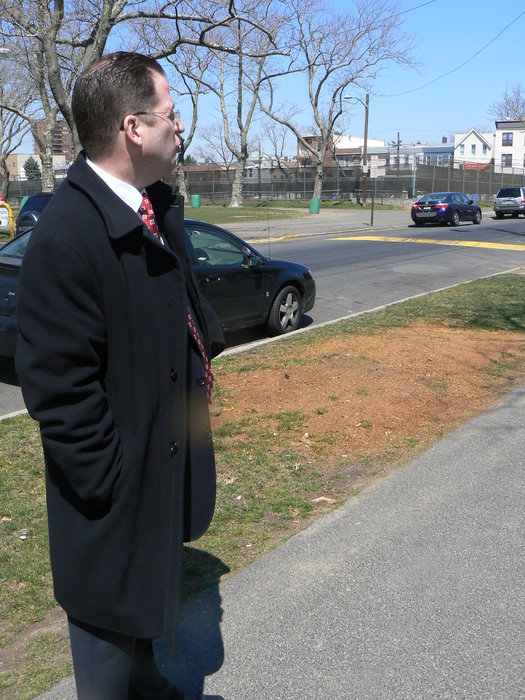The Union City Board of Commissioners recently approved the final plans for a $6.5 million complete renovation of its section of Washington Park, which sits on the border of the city and Jersey City Heights, in a large square surrounded by New York and Palisade avenues, Second Street, and Paterson Plank Road.
A project that has been in its planning phase for around two years will see the beautification of the park via newly paved walkways and decorative lampposts, hundreds of newly planted trees, and an expansion of the athletic field to accommodate regulation football, baseball, and soccer games.
“When you look at what’s there now, and compare it to the plan we have here, I think it’s clear that this park will be a nice gateway into the city,” said Mayor Brian Stack at a recent board meeting.
The project will be funded in part by two grants given to the city in recent years, as well as through city funding. The grants include a Hudson County Open Space grant for $500,000 and a Green Acres grant from the New Jersey Department of Environmental Protection for $1 million. The remainder of the costs will be covered by the city.
The project will break ground in June and will hopefully be completed by Thanksgiving, said Ralph Tango, an engineer at Maser Consulting contracted to the city.
“We’re going to be busting at the seams with trees.” – Brian Stack
____________
800 trees and two new sports
The field renovation, which Stack said he considered to be the best part of the entire project, will allow the city’s children and recreation leagues to use the field not only for baseball, as it does currently, but also football and soccer.
“This is going to be the best thing for our kids,” said Stack during a tour of the park. “We’ve got one of the most densely populated cities in the country and not a lot of room for our kids to play. They’d play baseball here but now it can be used year-round for soccer and baseball as well.”
The renovation will see the planting of around 770 trees in the park and around its border. In addition to around 200 matured trees, 450 deciduous and 120 evergreen trees will be planted, all of which will be between 6 and 12 feet tall. In addition to the trees, 1,100 shrubs and 800 flowers will be added throughout the passive recreation area.
“We’re going to be busting at the seams with trees,” said Stack.
Environmentally-friendly
In addition to the obvious positive effects of planting hundreds of trees and thousands of smaller pieces of plant life, the park boasts two man-made features that will significantly lower its carbon footprint. A pipe gallery, or array, will be constructed beneath the turf field, so that all the rainwater which seeps through the field can be recycled to help irrigate the entire park.
“Let’s say it rains today. The water is held for a few days. There’s sensors that will know when conditions will dry. The irrigation will kick in and pump down the stormwater,” said Tango. “If it doesn’t rain for a while, it’ll use regular water, but usually we’ll be storing enough to minimize the amount.”
Neighborhood collaboration
The project was planned with significant input from neighborhood advocacy groups, namely the Washington Park Association, which had been planning its own Open Space application to the county when it found out about Stack’s plan. Though the group initially tried to collaborate with the city, former association president Peter Basso said it felt like an uphill battle.
“Based on what we knew at the time, it looked like there was a plan to drastically expand the field, taking out these historical trees and not really planning for the way it would affect the park and the neighborhood,” said Basso.
But after a series of meetings with county officials and Stack, tensions relaxed and collaboration began, Basso said.
“It was at that point that the mayor said, ‘You know if you want a seat at the table, you’re welcome to it,’ ” said Basso. “So we took him up on it.”
The group was instrumental in choosing the types of trees and stonework would be used in the project.
“We must have had 19 or 20 meetings with them,” said Stack. “I even went down to the quarry with them and looked at the different types of stone.”
Now, with the project ready to break ground, the group said it is more than pleased with the plans.
“This is is going to be beautiful. It’s going to be great,” said the group’s new president, Nick Caballero. “Just like in any relationship, you have to go through rough patches to make something work.”
Dean DeChiaro may be reached at deand@hudsonreporter.com
